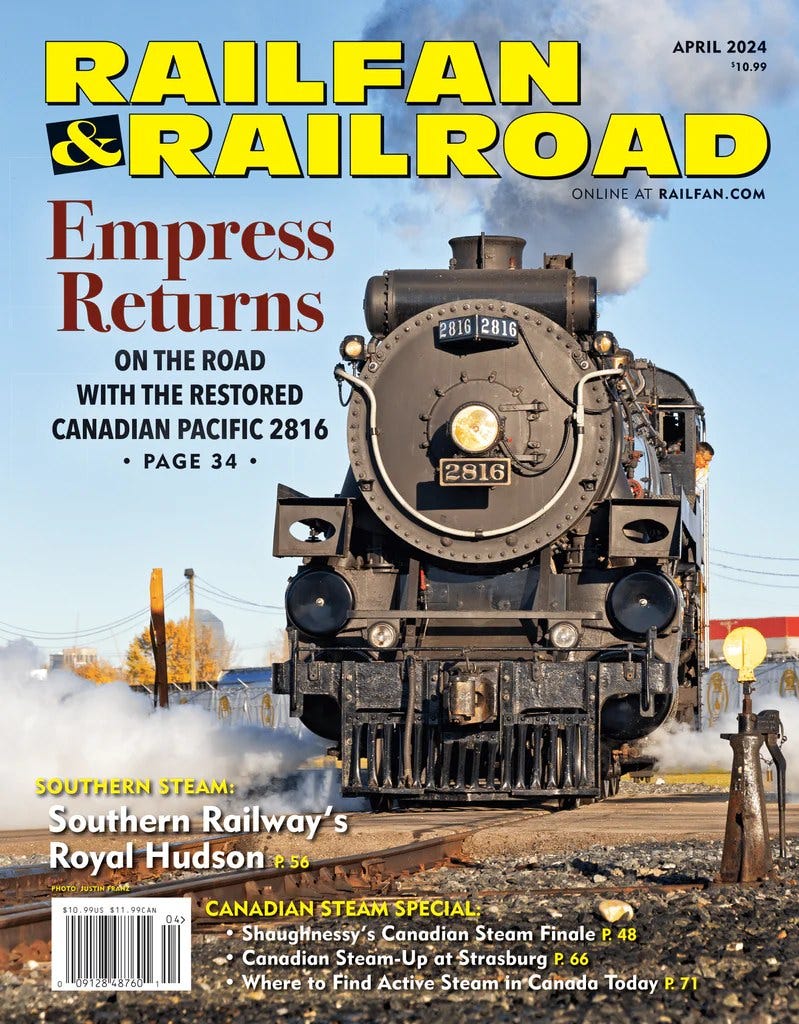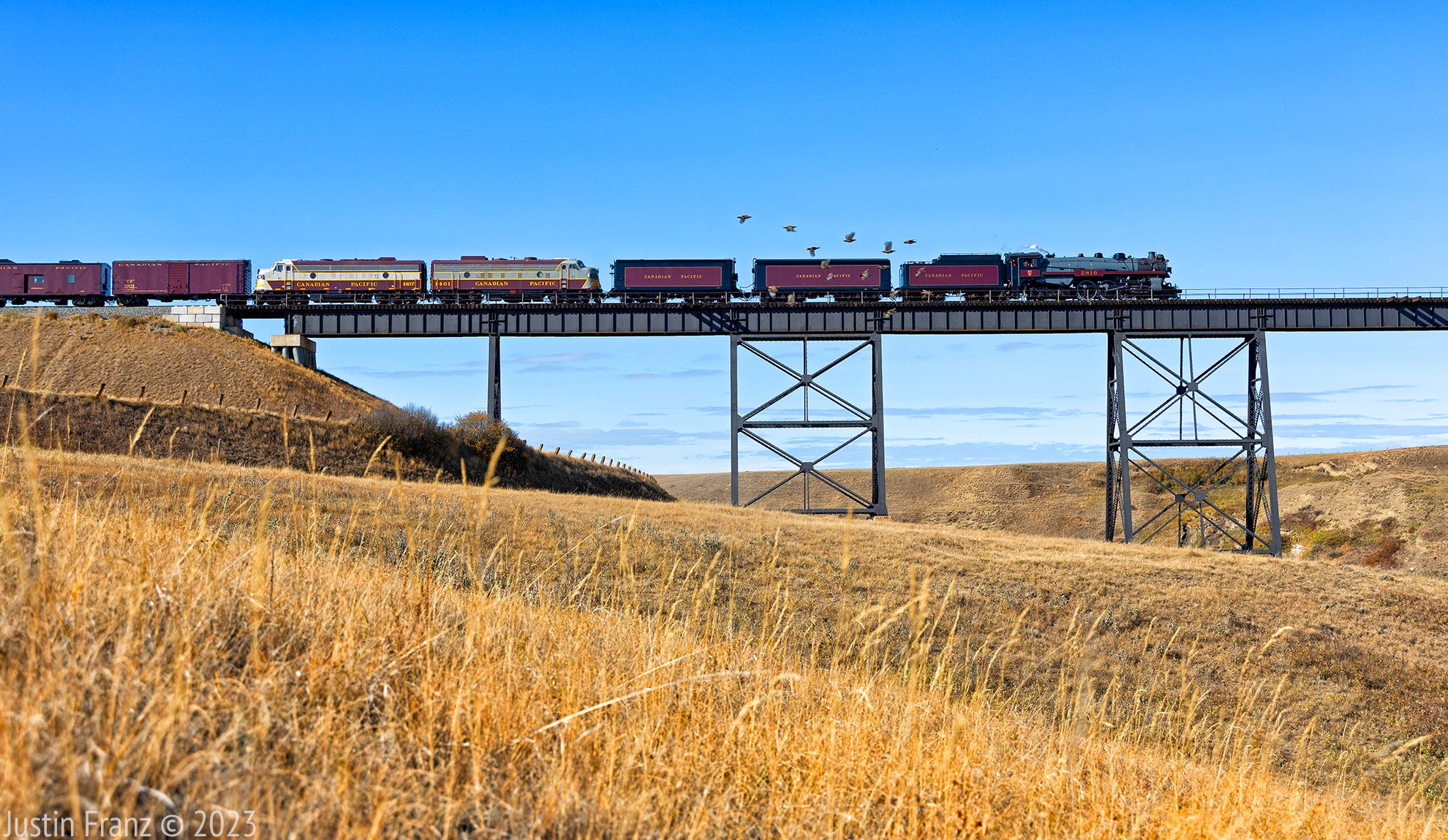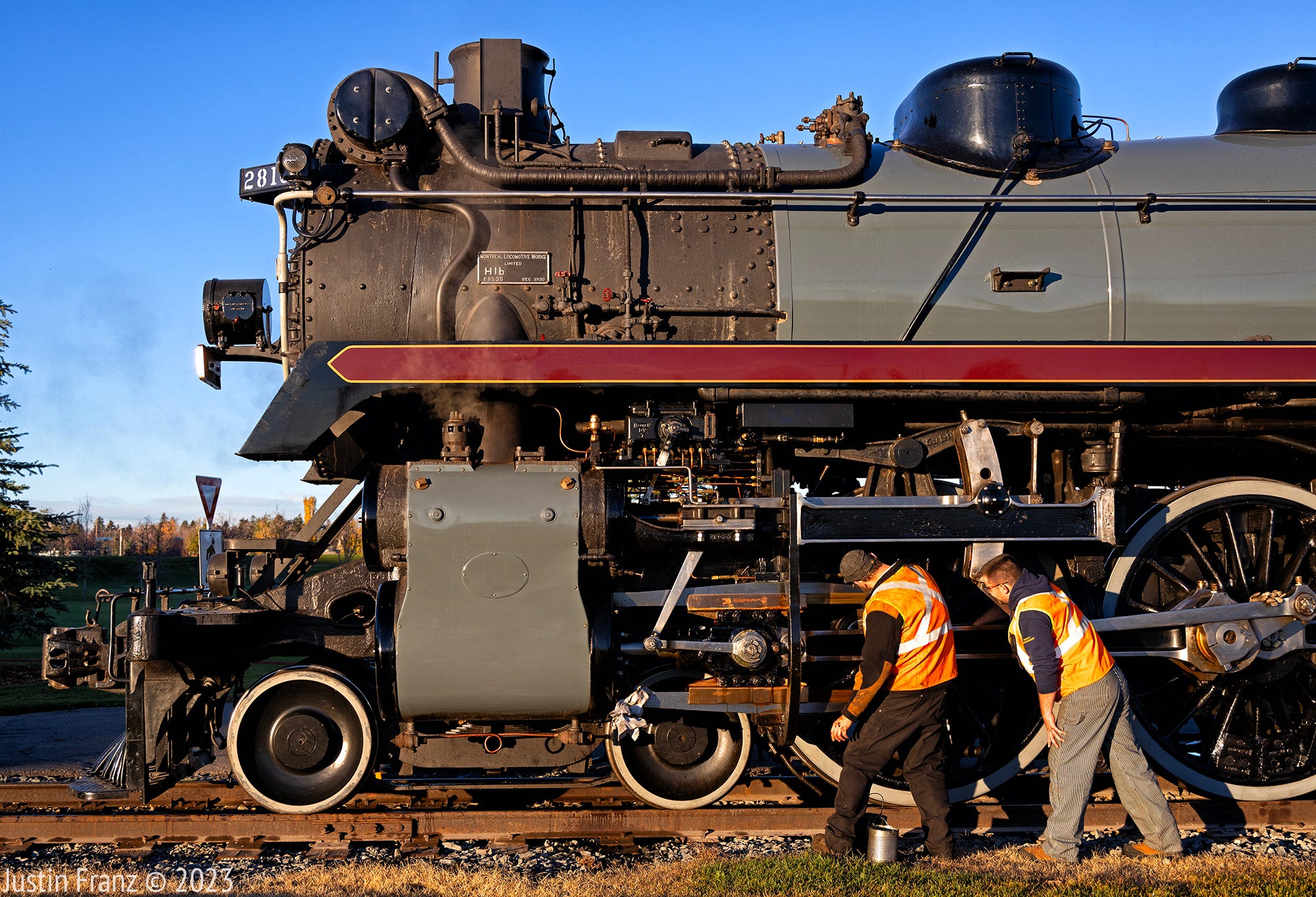I have been a fan of Canadian steam for as long as I can remember and I’m sure I’m not alone, especially if you grew up in the Northeast United States. My earliest interactions with standard gauge steam were at places like Conway Scenic, Strasburg Rail Road, and Steamtown National Historic Site, all of which employed Canadian locomotives. Of course, the influx of Canadian Pacific and Canadian National locomotives didn’t come out of nowhere. In the late 1950s and early 1960s, as the rail preservation movement in the U.S. was still getting underway, there were roundhouses full of stored steam locomotives just over the border, for sale and ready for service.
The first “big” engines I saw — bigger than an 0-6-0 or a Maine 2-footer at least — were CN 2-8-2 3254 and CP 4-6-2 2317 at Steamtown. Nearly 30 years after my first trip to Scranton, Pa., I can still vividly remember how impressive it was to see a steam locomotive storm by at speed.
If my fandom of Canadian steam began on that fateful day in 1994, then it was cemented two years later near Tobyhanna, Pa., in February 1996. Dad and I had traveled to Scranton to see Milwaukee Road 4-8-4 261 lead some wintertime excursions. Upon arrival in Scranton though, Dad (another one who was bit by the Canadian steam bug at a young age) was more excited about seeing G3c 2317 fired up than the big Northern that was the “star” of the show. I couldn’t quite understand his perspective at the time; after all, 261 was the “big” engine that came all the way from the Midwest to visit. But that afternoon, when 2317 led the excursion back to Scranton (there was no place to turn 261, so they needed an engine to lead the train back west), I came to understand his excitement. On the tangent across from the Tobyhanna Army Depot, we waited in the cold for the train. Before long, a headlight engulfed in smoke and steam appeared down the tracks. Moments later, 2317 was storming by us, kicking up snow and looking every bit like it might have 40 years earlier leading a Montreal commuter train or a fast freight across the Canadian Prairies. The resulting photo remains one of my favorite steam locomotive shots all these years later, marking the moment an interest became a lifelong fascination.
I had a chance to use that fascination when organizing the April edition of Railfan & Railroad Magazine, a special all-Canadian steam issue on sale now. At the heart of the issue is a cover story about the return of CP 4-6-4 H1b 2816, which is expected to depart Calgary, Alberta, next month for an ambitious three-nation tour to celebrate the merger that created CPKC Railway.
Last fall, I spent some time in Alberta photographing the locomotive on its first test runs following a decade of storage and digging into the history of this special class of locomotive. Developed by CP’s Chief of Motive Power and Rolling Stock Henry Blaine Bowen, the 2800s were among the best steam locomotives ever built in North America. They were so good that King George VI allowed them to be dubbed “Royal,” the only locomotives outside of England to receive such an honor.
You can read a preview of the cover story on Railfan’s website.
Besides the story on 2816, we reached out to Ron Flanary, one of the southeast’s finest railroad writers, for a piece on Southern Railway’s “Royal Hudson” 2839, which spent two years working for the railroad’s famed steam program. Then the Center for Railroad Photography & Art shared an incredible gallery of images from the Jim Shaughnessy collection looking at the final years of steam in eastern Canada. Editor Steve Barry then shares a look at two CN survivors on the Strasburg Rail Road. Plus, we have three different columns dedicated to steam locomotives north of the border, including a rundown of active steam in Canada.
Themed issues are always my favorite to put together; it’s always so satisfying to try and figure out what stories we want to tell and how they fit together. But this one dedicated to Canadian steam has been hands-down my favorite. I hope you take the time to check it out.
What else I’m working on…
While the April issue took up a lot of bandwidth in recent weeks, I still tackled a few other stories. For the Montana Free Press, I reported on the ongoing effort to rebuild Glacier National Park’s iconic Red Buses. And for the Center for Railroad Photography & Art’s Railroad Heritage, I authored a feature about Railfan’s founding editor, Jim Boyd, just in time for the magazine’s 50th anniversary. That issue is now in the hands of Center members (if you’re not a member, consider joining!) and should be available for purchase online soon.
That’s all for now. Thanks for reading and if you like what you see, share it with a friend.
-Justin



